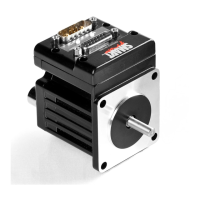Moog Animatics SmartMotor™ Developer's Guide,Rev. L
Page 201 of 909
Motion and Motor Faults
This section provides information on motion faults and motor faults.
Overview
Status bits and LEDindicators are used to keep the programmer or operator aware of present
or past fault conditions of the SmartMotor. Keep the following points in mind when viewing the
status bits or LEDs.
l
Red LEDs do not necessarily mean the motor has faulted.
l
Faults do not mean the motor is "broken" or not working properly.
l
A motor fault typically means a user or design limit has been reached.
l
Status bits are not always fault bits.
l
Status bits are used to indicate present conditions or past (historical) conditions.
For more details on LED functions, see Understanding the Status LEDs in the SmartMotor
Installation & Startup Guide for your motor.
Drive Stage Indications and Faults
The following are fault bits that stop motion and turn off the Drive OK bit:
1. B(0,3) Voltage Fault Either high or low Historical indication
a.B(6,14) High bus voltage Voltage depends on motor model
b.B(6,13) Low bus voltage Voltage depends on motor model
2. B(0,5) Excessive Temperature Historical indication >=85° C
NOTE: The only fault bit with hysteresis, 80° C prior to clearing
3. B(0,6) Excessive Following Error Historical indication
a.EA (Actual Following Error) exceeded EL (Error Limit)
b.EL=1000 encoder counts by default
4. B(0,7) Velocity Limit Historical indication
VL sets Velocity Limit and defaults to 10400 RPM for most motors
5. dE/dt Error Limit Rate of Change for Following Error
Defaults to +2
31
and is in same scaled units as velocity
6. Travel Limits, both hardware and programmable software limits
NOTE: Peak Over Current limit is NOT a fault-causing limit! It is an indication that
the drive stage is working as hard as it can to keep up with demand.
For additional details, see Status Word: 0Primary Fault/Status Indicator on page 879, and
Status Word: 1Index Registration and Software Travel Limits on page 880.
Fault Bits
The ZS command typically clears all fault bits. However, issuing the ZS command when you
get a fault on the peak overcurrent bit means you will potentially mask other fault conditions
and, therefore, not know why there is a fault on the peak overcurrent bit.
Part 1: Programming: Motion and Motor Faults

